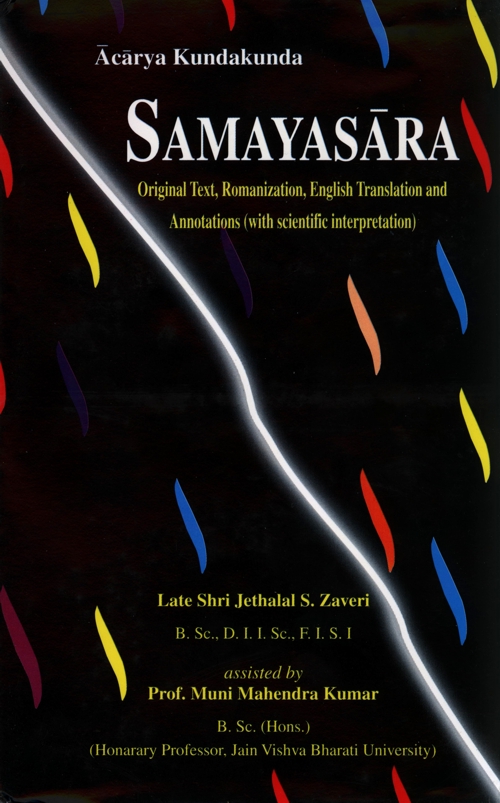
jaha seḍiyā du ṇa parassa seḍiyā seḍiyā ya sā hodi.
taha jāṇago du ṇa parassa jāṇago jāṇago so du..49

jaha seḍiyā du ṇa parassa seḍiyā seḍiyā ya sā hodi.
taha passago du ṇa parassa passago passago so du..50


jaha seḍiyā du ṇa parassa seḍiyā seḍiyā ya sā hodi.
taha saṃjado du ṇa parassa saṃjado saṃjado so du..51

jaha seḍiyā du ṇa parassa seḍiyā seḍiyā ya sā hodi.
taha daṃsaṇaṃ du ṇa parassa daṃsaṇaṃ daṃsaṇaṃ taṃ tu..52

evaṃ tu ṇicchayaṇayassa bhāsidaṃ ṇāṇadaṃsaṇacaritte.
suṇu vavahāraṇayassa ya vattavvaṃ se samāseṇa..53
(Jaha seḍiyā du parassa ṇa, seḍiyā seḍiyā ya sā hodi) Just as a whitening agent [while transferring its characteristic whiteness to the wall to which it is applied] retains its identity on the surface of the wall, [i.e., does not become identical to the wall], (taha jāṇago du parassa ṇa, jāṇago so du jāṇago) so also the soul [in the process of knowing an external object] retains its identity as the 'knower' but does not become one with the object of knowledge.
(Jaha seḍiyā du parassa ṇa, seḍiyā seḍiyā ya sā hodi) Just as a whitening agent [while transferring its characteristic whiteness to the wall to which it is applied] retains its identity on the surface of the wall, i.e., does not become identical to the wall, (taha passago du parassa ṇa, passago so du passago) so also the soul (in the process of perceiving an external object) retains its identity as the 'perceiver' but does not become one with the object of perception.
(Jaha seḍiyā du parassa ṇa, seḍiyā seḍiyā ya sā hodi) Just as a whitening agent (while transferring its characteristic whiteness to the wall to which is applied) retains its identity on the surface of the wall, i.e., it does not become identical to the wall, (taha saṃjado du parassa ṇa, saṃjado so du saṃjado) so also the soul [in the process of renouncing external objects/possessions retains its identity as the 'renouncer' but does not become one with the renounced objects.
(Jaha seḍiyā du parassa ṇa, seḍiyā seḍiyā ya sā hodi) Just as a whitening agent (while transferring its characteristic whiteness to the wall to which is applied) retains its identity on the surface of the wall, i.e., it does not become identical to the wall, (taha daṃsaṇaṃ du parassa ṇa, daṃsaṇaṃ so du daṃsaṇaṃ) so also the soul in the process of its right belief in the tattvās] retains its identity as the possessor of the right faith, but does not become one with the external tattvās.
(Evaṃ tu) Thus, (ṇāṇa-daṃsaṇa-caritte) the triple characteristic attributes of an enlightened soul, viz, knowledge, faith and conduct, (ṇicchayaṇayassa bhāsidaṃ) have been described from the transcendental/ultimate aspect; [now] (se samāseṇa vavahāranayassa vattavaṃ suṇu) listen to the same topic, briefly, from the other—empirical or vyavahāra—aspect also.
 Jethalal S. Zaveri
Jethalal S. Zaveri
 Prof. Muni Mahendra Kumar
Prof. Muni Mahendra Kumar

